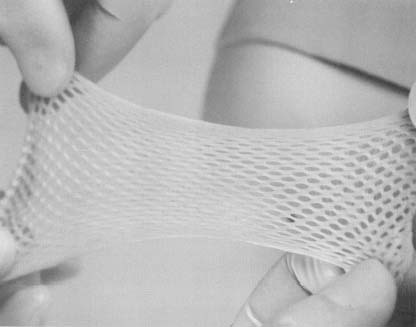Innovators
[ Silastic ] The first synthetic organ, skin, was invented by John F. Burke, of Massachusetts General Hospital, and Ioannis V. Yannas, of Massachusetts Institute of Technology. This product, called Silastic, was created using shark cartilage and cowhide, as well as silicone for a second layer. Silastic works as a frame for the patient to grow new skin cells and blood vessels. It was first tested in 1979 on a woman, whose burns spread to about fifty percent of her body, and was found to be a successful product (15). The invention of Silastic paved the way for other synthetic skin products. As skin is also the largest organ in the body, it was also a major breaking point for synthetic organs in general. |  Image 10 -Silastic |
 [ UC Davis ]
[ UC Davis ]
At the University of California in Davis, Jan Nolta, the stem cell director, is one of the leading stem cell researchers in the nation. The university has more than one hundred faculty members studying regenerative medicine. The current research is focused on using stem cells for cell therapies in order to treat diseases of the organs (17).
[ Stem Cell Technologies ] Stem Cell Technologies is a company that provides a wide range of products related to the field of stem cells, as well as other life science fields. They specialize in providing media and cell separation products for scientists who are carrying out research regarding stem cells. They also provide cytokines, antibodies, and tissue culture reagents (16). |  Image 11 -Stem Cell Technologies |
Interested in possibly becoming a biomedical science innovator yourself? To the left is a list of jobs related to the broad field of biomedicine. |